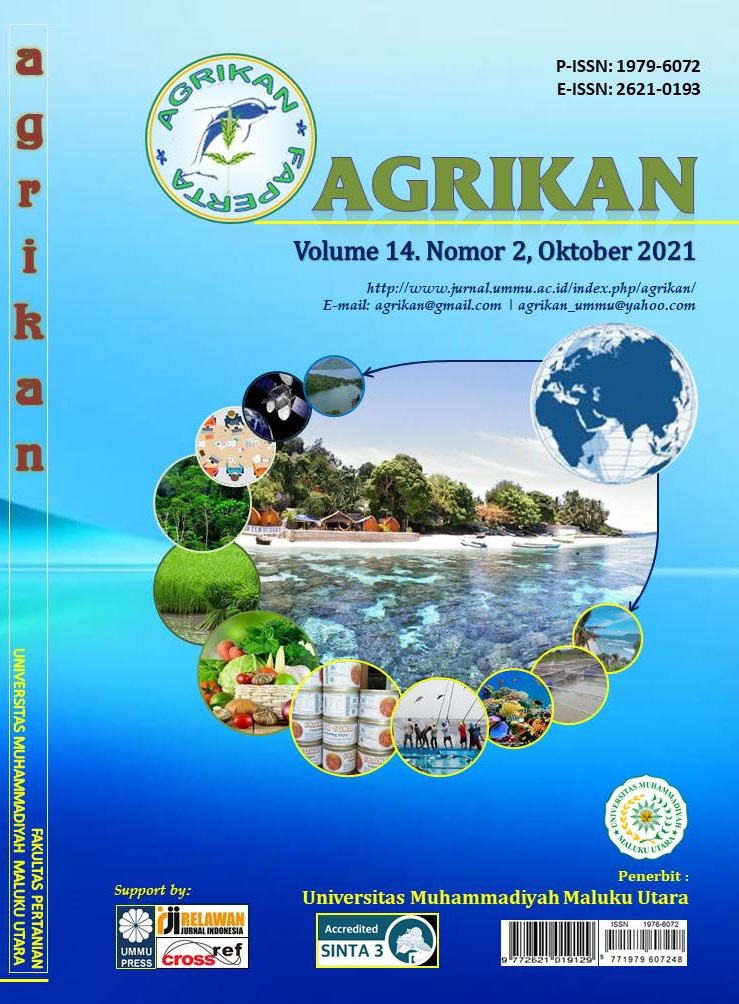Sustainability Status of Pole And Line Fisheries Based on Biological Aspect on Goto Fish Landing Site, Tidore Regency
DOI:
https://doi.org/10.52046/agrikan.v14i2.977Keywords:
Sustainability status, pole and line fishery, Skipjack, Tidore IslandsAbstract
Fishing ground of skipjack (Katsuwonus pelamis) is mainly detected in Tidore waters using pole and line fishing gear and FADs. Skipjack that gatheres in the surface water is categorized as young fish. Therefore, skipjack caught around FADs tends to be young fish. This phenomenon causes the emergence of a larger problem, namely the dominance of young fish. In addition, untargeted fish caught consists of bycatch and discards. The study objective is to analyze the biological aspects of skipjack which includes the structure of fork length and suitable size, catch composition, rate of bycatch and discards. The pole and line catch samples were collected 5 months (April to August, 2021) using purposive sampling method. The results showed that the size of skipjack fit for catching at the research location was 80% and 20% unfit for catching. The catch was dominated by the targeted fish (94.5%), while the by-catch of baby yellowfin tuna was 5.0% and komo tuna 0.5%. The most bycatch was found in April, around 2.8%. During study obtained, discarded fish caught were not observed. Based on unworthed fish caught, bycatch, and discards percentages, pole and line fishery that lands number of fishes in which based in Goto Tidore fish landing site is classified as a high level of sustainability status.
Downloads
Published
Issue
Section
License
Copyright (c) 2021 Surahman Surahman, M. Amirul Karman

This work is licensed under a Creative Commons Attribution 4.0 International License.

This work is licensed under a Creative Commons Attribution 4.0 International License.













